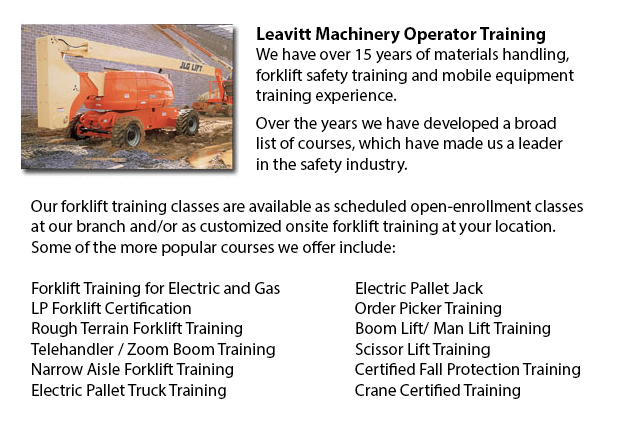
Boom Lift Certification Markham - Elevated work platforms allow maintenance operations and work to be performed at heights which can not be reached by whatever other method. Boom Lift Certification Training educates workers regarding safely operating scissor lifts and boom lifts.
When work platforms are not operated safely, they have the possibility for serious injury and even death, regardless of their lift style, site conditions or application. Falls, electrocution, crushed body parts, and tip-overs could be the tragic outcome of incorrect operating procedures.
To be able to avoid aerial lift incidents, people need to be qualified to be able to train workers in the operation of the certain kind of aerial lift they would be using. Controls should be easily accessible beside or in the platform of boom lifts made use of for carrying workers. Aerial lifts should never be altered without the express permission of other recognized entity or the manufacturer. If you are leasing a lift, make sure that it is properly maintained. Before utilizing, controls and safety devices need to be checked in order to make sure they are properly working.
It is essential to follow safe operating procedures to be able to prevent workplace incidents. Driving an aerial lift while the lift is extended should not be done, nonetheless, a few models are designed to be driven when the lift is extended. Always set brakes. Set outriggers, if available. Avoid slopes, but when required utilize wheel chocks on slopes which do not exceed the slope restrictions of the manufacturer. Follow manufacturer's weight and load limitations. When standing on the boom lift's platform, use full-body harnesses or a safety belt with a two-foot lanyard tied to the boom or basket. Fall protection is not needed for scissor lifts which have guardrails. Do not sit or climb on guardrails.
This course comprises the following topics: training and certification; safety guidelines in order to prevent a tip-over; inspecting the work area and travel path; slopes and surface conditions; other tips for maintaining stability; stability factors; leverage; weight capacity; testing control functions; pre-operational inspection; safe operating practices; mounting a vehicle; safe driving procedures; power lines and overhead obstacles; PPE and fall protection; use of lanyards and harness; and avoiding falls from the platform.
The trainee who is successful would know the following: training and authorization procedures; pre-operational check procedures; factors affecting the stability of boom and scissor lifts; how to prevent tip-overs; how to utilize the testing control functions; how to utilize PPE and fall prevention strategies.
-
Crane / Overhead Crane / Self-Erect Crane / Truck Mounted Crane / Hydraulic Cranes Training in Markham
Bridge cranes or overhead cranes are a kind of industrial material handling crane making use of a hook and line apparatus that runs on a horizontal beam running along two widely separated rails. Many overhead cranes could be seen inside a long factor... More -
Manlift Ticket Markham
Manlift Ticket Markham - The Manlifts and Elevated Platforms program provides training on the regulations, rules and correct application of safe operating procedures and work practices involved in everyday activities for individuals who work with thi... More -
Aerial Lift Train the Trainer Markham
Aerial Lift Train the Trainer Markham - The Aerial Lifts Train the Trainer Certification Program will teach trainers how to effectively train operators in safe industrial mobile equipment operation. Trainers are given in-depth instruction on aerial l... More -
Loader Operator Training Markham
Loader Operator Training Markham - Loader Operator Training - Within North America, lift truck operator training is required to be able to prevent workplace injuries and accidents. Certain forklift training would be provided to be able to offer forkl... More -
Aerial Boom Lift Ticket Markham
Aerial Boom Lift Ticket Markham - Aerial lift trucks can be used to accomplish many unique duties done in hard to reach aerial spaces. A few of the duties associated with this style of jack include performing daily repair on buildings with high ceili... More -
Boom Lift Operator Training Markham
Boom Lift Operator Training Markham - The cherry picker work platform is a type of work platform, that will usually have a bucket or platform at the hydraulic lifting system's end. The machine is likewise called a boom lift, man lift, hydraladder or... More -
Boom Lift License Markham
Boom Lift License Markham - Just fully qualified individuals must operate an aerial boom lift. Qualification can be obtained through a combination of classroom sessions and practical training with the particular kind of aerial lift that will be used... More -
Telehandler Training Courses Markham
Telehandler Training Courses Markham - The employer has the responsibility to make certain that their workers are trained to work proficiently with telehandler machines. The staff have to be assessed for their skill to utilize the equipment. If defic... More

Forklift Training Markham
TOLL FREE: 1-888-254-6157
Markham, Ontario
forklifttrainingmarkham.com
Email Us
About Us


